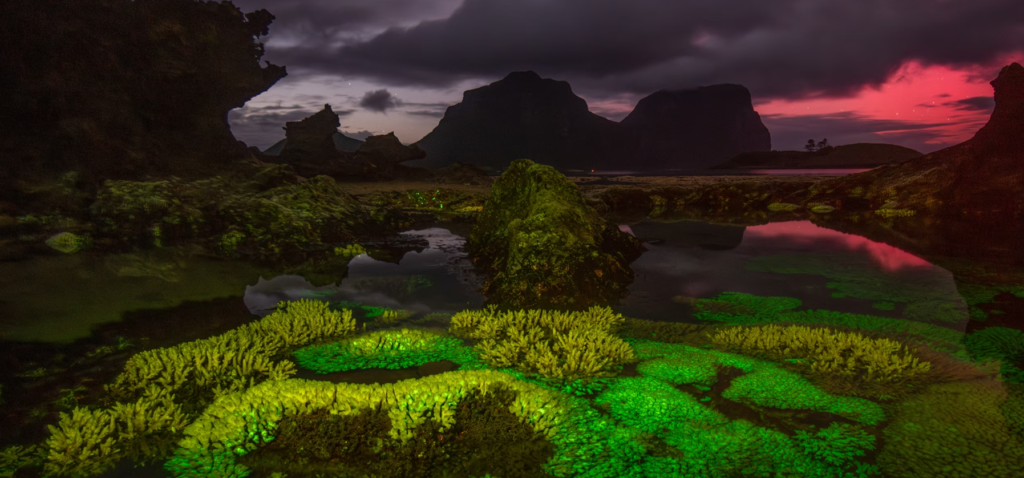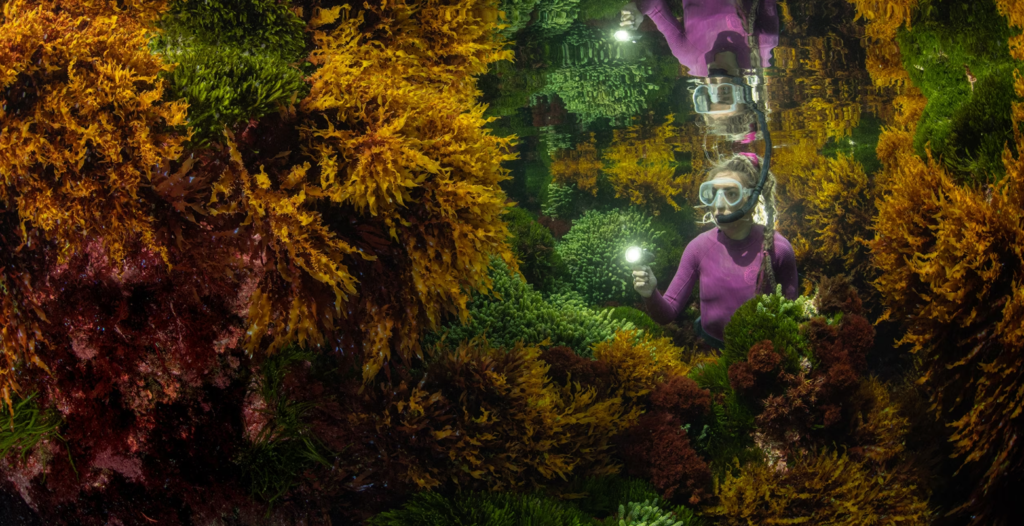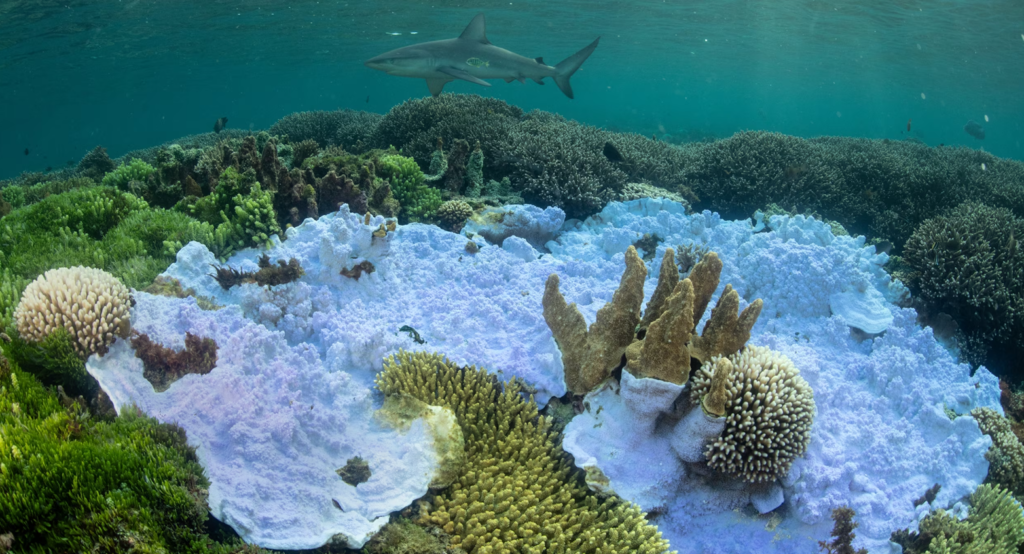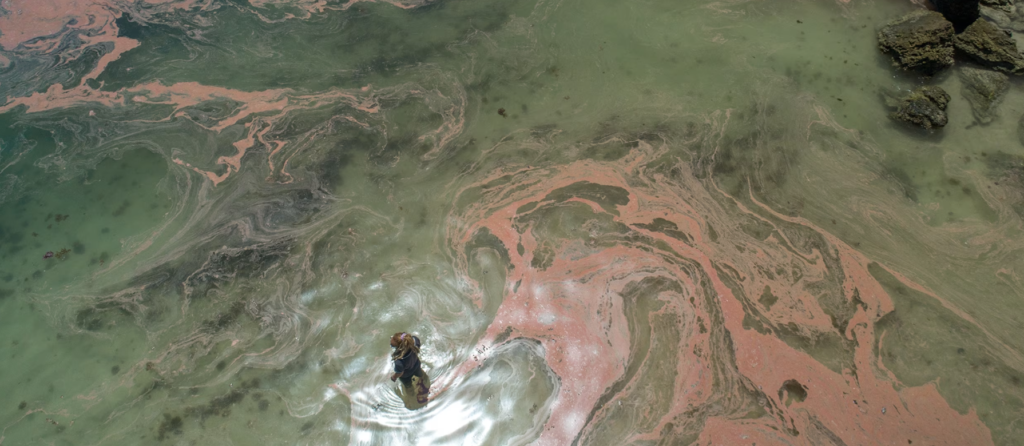
New images, exclusive to National Geographic, show that even remote marine havens aren’t safe from the impact of climate change.
Lord Howe Island, a two-hour flight from Sydney, is home to the world’s southernmost coral reef, and its protected waters are a paradise for marine life.
This year, researchers were devastated when a double tragedy hit the region’s pristine reefs. Soaring ocean temperatures and record-low tides wiped out many sensitive corals.
“It really demonstrates how widespread the impacts of climate change are on our marine ecosystems,” says Bill Leggatt, professor at the University of Newcastle, Australia.
What is coral bleaching?
Corals are animals that have a mutually beneficial relationship with microalgae called zooxanthellae. The algae live inside the coral and provide it with food in exchange for shelter. It’s these zooxanthellae that give coral their stunning colors.
But this relationship is fragile. When waters get too warm, even by one or two degrees, corals eject the algae, turning white.
“Corals aren’t like us. They can’t go to the doctor. They can’t show a temperature or have a cough. If coral gets stressed, they lose their algae and that’s what coral bleaching is,” says Leggatt.


A heartbreaking bleaching event
Global sea surface temperatures hit a record high in February 2024.The warming effects of climate change were exacerbated by the El Niño weather pattern that spiked temperatures around the globe. This heat caused the world’s fourth mass bleaching event, with the Great Barrier Reef and reefs across Florida, the Caribbean, the South Pacific, the Red Sea, and the Persian Gulf all experienced bleaching.
The researchers on Lord Howe Island saw this coming. Snorkeling on reefs three to 10 feet deep enabled them to gather baseline data to study the reefs before, during, and after bleaching.
Sea surface temperatures around Lord Howe average around 60.8 degrees Fahrenheit in winter, rising to 78.8°F degrees in summer. They reached a record-breaking 84.2°F degrees during Australia’s most recent summer.
In late January, just before summer temperatures spiked, the reef was pristine. “The colors were incredible,” says Paige Sawyers, PhD student at the University of New South Wales who surveyed the corals. “It was how I pictured the Great Barrier Reef to be about 30 years ago.”
The team was shocked when they returned a month later to find the reef had changed beyond recognition. “There was bleaching at every single site,” says Sawyers. “It didn’t feel like the same reef.”
As they die, some species of coral glow in highlighter pinks, purples and greens, like a final cry for help. “It’s almost like they put a neon light on,” says Sawyers.
But coral can recover if temperatures drop in time for the algae return to their hosts. As the summer ended and temperatures dropped, things looked promising. “Specific species that had bleached were getting their zooxanthellae back,” says Sawyers. “It looked like everything was going to be OK.”
A second blow
That’s when disaster struck. In May, the island was hit by extremely low tides which left 13 to 15 inches of coral exposed to the air, causing further bleaching, and killing corals that were no longer underwater.
“You can actually see a distinct line on some of the coral colonies where the water stopped,” says Sawyers.
The combination of bleaching followed by these unusually low tides was “an unfortunate series of events,” says Leggatt. Very shallow corals naturally encounter low tides but, already stressed by the hot waters, the environmental stress was lethal.
The team is analyzing the data to see the extent of the bleaching but, thankfully, not all Lord Howe’s coral was lost.

Can the reefs recover?
As winter arrives, the experts are already seeing signs of recovery as the corals regain their color.
But Leggatt remains concerned by the extent of the recent bleaching on an island that is so isolated from other human impacts.
showed signs of bleaching stress. Back-to-back record heat and low tides proved fatal to many corals.
With climate change causing increasingly severe bleaching events, these precious ecosystems are under threat. Losing them would have huge impacts on the environment and the people who rely on them for their food and livelihoods.
While small-scale restoration efforts can help on a local scale, the problem is too vast for these interventions to provide a global solution.
“If you said to people, we’re going to lose the Amazon in 10 to 15 years, the solution wouldn’t be to try and bank trees and replant the Amazon,” says Leggatt. “It has to come from stopping the large impact, stopping climate change.”
